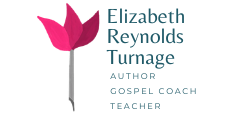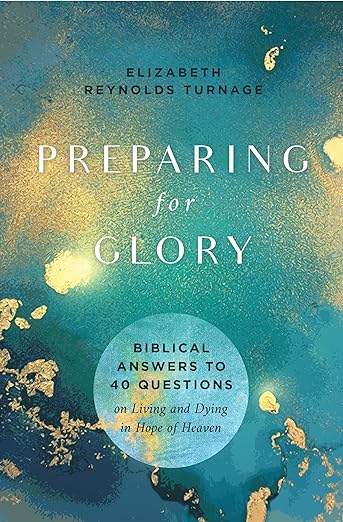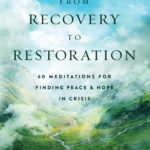by Elizabeth | Mar 23, 2010 | Learning Story
Day 2 of Disclaimer: I don’t have a clue how to reform health care in a way that addresses the essential issues. And yet, because I am redeemed and see a cosmos headed toward final and full redemption, I am frustrated with longing and desire for a plan that truly heals bodies, minds, souls, and hearts. Today I quote Nathan Bierma from Bringing Heaven Down to Earth on how having a large vision of the gospel impacts the way we live here and now:
“When we consider the full story of the gospel (from the Old English word godspel, meaning ‘good news’), we see a larger picture of the redemption Christ brought about, and we starve for the completion of it. The gospel stands on three legs, not one; Christ’s redeeming work was done to restore nature, culture, and human beings. Now that’s good news. ‘The total work of Christ is nothing less than to redeem this entire creation from the effects of sin,’ writes Anthony Hoekema. ‘We need a clear understanding of the doctrine of the new earth, therefore, in order to see God’s redemptive program in cosmic dimensions.’
But a gospel this limited shrinks its source.
When we live in the hope of a big gospel, we see Jesus Christ not just as a serial intruder on people’s souls but the one in whom ‘all things hold together,’ in the words of Colossians 1. All things – not just people’s hearts but the infrastructure of nature, culture, and relationships. So the hope of a big gospel is not just going to heaven to be with God, but a vision of the new earth and the heavenly city as the place where God’s authority over all of life is made complete. Living in the hope of heaven means seeing glimpses of such a place already, and wanting more.
Price says, ‘The strong impression is given that God sent his only begotten Son, the second Person of the Trinity, to earth to be crucified and resurrected just so the Pietist can…have a blissful quiet time.’ As a result, ‘the reality of Christ is effectively limited to a source for individual sanctification, even for spiritual coziness.’
To live with this tension on a daily basis – to simultaneously occupy the two worlds Thoreau separated – requires a big picture of the world and our place and purpose within it. We need a big gospel vision for how we are living, what we are hoping, and where we are going.”
by Elizabeth | Mar 22, 2010 | Learning Story
Sorry for the teaser — I certainly don’t pretend to have the ultimate plan to “reconcile” our nation in the dissent and differences on health care. However, this morning, I am reviewing the lesson on “Consummation,” the end of the story, as told in Revelation 21 and 22, and there I found encouragement in God’s plan. His plan will be fully revealed and finally fulfilled in that one day, but the really good news is we need not wait until the end to discover it. Christ’s kingdom has been established, and even today, the Holy Spirit is working in our hearts to transform and reform. Today I am reading about the health that has implications for health care reform, both here and now in America, and more broadly in the world: the reconciliation Christ has brought and will bring to completion. I awoke with lovely lyrics playing in my head…check this Indelible Grace song out and see where it meets your heart on the issue of health care reform.
Jesus Lord We Look To Thee
1. By thy reconciling love
Every stumbling block remove
Each to each unite, endear
Come and spread thy banner here
Chorus: Jesus, Lord, we look to thee
Let us in they name agree
Show thyself the Prince of Peace
Bid all quarrels forever cease
2. Make us of one heart and mind
Courteous, pitiful, and kind
Lowly, meek, in thought and word
Altogether like our Lord Repeat chorus
3. Let us then with joy remove
To thy family up above
On the wings of angels fly
Show how true believers die Repeat chorus
© 2004 Jason Feller Music.
Used by permission. All rights reserved
by Elizabeth | Mar 20, 2010 | Learning Story
The narrator of the novel, The Help, struggles with her own relationship with her mother, and observes both the brokenness and beauty of other characters in the novel. This book engages issues of marginalization, being seen, and not being seen on a number of levels. Listen to this description of “Skeeter”‘s experience as a child:
“Mother ate her breakfast early in the dining room, then moved to the relaxing room to do needlepoint or write letters to missionaries in Africa. From her green wing chair, she could see everyone going almost anywhere in the house. It was shocking what she could process about my appearance in the split second it took for me to pass by that door. I used to dash by, feeling like a dartboard, a big red bulls-eye that Mother pinged darts at. “Eugenia, you know there is no chewing gum in this house.’ ‘Eugenia, go put alcohol on that blemish.’ ‘Eugenia, march upstairs and brush your hair down, what if we have an unexpected visitor?’ I learned that socks are stealthier transportation than shoes. I learned to use the back door. I learned to wear hats, cover my face with my hands when I passed by. But mostly, I learned to just stay in the kitchen.”
It was in the kitchen that she found the delight of the black maid who raised her, who taught her her own dignity:
“It was having someone look at you after your mother has nearly fretted herself to death because you are freakishly tall and frizzy and odd. Someone whose eyes simply said, without words, ‘You are fine with me.’
by Elizabeth | Mar 19, 2010 | Learning Story
More from N.T. Wright’s wonderful little book Christians at the Cross. Here’s what he suggests as the practical way for the Colliery community to begin to address their grief. Note that he is not suggesting that gathering the grief and placing it at the Cross will somehow magically erase all the pain and make everything better:
“I want you to gather up the pain and grief of this community: the mining disaster half a century ago when over 80 men lost their lives; the other mining disaster — the pit closures — of 20 or 30 years ago, when nearly twenty times that number lost their jobs and the family and social sorrows, whatever they may be. I want you to write down, some time over the next two or three days, just a sentence or two, or maybe just a word or two, about the particular griefs this community has had to bear in recent years. And over the course of the week, we’ll gather them up, we’ll put them in a basket here somewhere, and when we get to Good Friday, we’ll bring them to the cross and leave them there.
Because, you see, that is the only way we can really and truly deal with them. We come, like the crowds on Palm Sunday, with all kinds of hopes and frustrations, with sorrows and fears, and we have that glimmer of hope that maybe Jesus will be able to do something about it all…
…scribble something down…and we’ll keep them here and fold them into the story on Good Friday itself. I have no idea what God will do with them. But I do know that, when you bring things to the foot of the cross, the music of Jesus’ death transforms them in ways we can’t predict or explain.”
I’m posting these words because I know so many people who are dealing with profound grief from incomprehensible stories. Even those of us who are not wrestling with deep suffering have hard stories in our past. As we approach the ending of Lent, I wonder…what griefs of the past would you or I like to write down and place at the foot of the Cross? I wonder how seeing these griefs anew in the light of Jesus’ death and resurrection might transform us?
by Elizabeth | Mar 18, 2010 | Learning Story
It is too early, but I could not stop myself — I picked up N.T. Wrights, Christians at the Cross on Monday. It is a little book of sermons given Easter week in Easington Colliery, a very broken former mining community in England (you may know a version of it from the film Billy Elliott). The mine closed in 1994, taking with it both the primary employer and primary source of income. By 2007, when Wright visited there, the signs of broken shalom were everywhere, with former family abodes now being used for drug shacks, and teenage pregnancy, poverty, and obesity at appalling levels. Wright went there to join with the Council in asking what does restoring broken community look like in this situation?
In the introduction, he writes,
“…part of the problem may be in the difficulty of moving forwards when all the symbols and local culture are pointing back. As with an individual who has lost someone they love, part of the point of the process of grief, painful and horrible though it is, is to enable the person eventually to look about them, draw a deep breath, and make some new starts.
This isn’t just a matter of ‘moving on,’ in the fashionable jargon. It’s a matter of looking the past in the face, owning up to the grief which we often hide, and so laying a more solid foundation for what may be to come. I decided therefore that it was worth spending some time in facing the multiple bereavements of Easington Colliery and in weaving them together with the story of all stories, the story of Jesus on his way to the cross. As I say more than once in what follows, I have no blueprint for what might or should happen next. If God is at work he wil do what he will do, and his purposes are always full of surprises. But I am convinced that when we bring our griefs and sorrows within the story of God’s own grief and sorrow, and allow them to be held there, God is able to bring healing to us and new possibilities to our lives. That is, of course, what Good Friday and Easter are all about.”
Wright’s words are so helpful in that they acknowledge that we do not know the exact path grief will take. Furthermore, we are often plodding one day at a time through this uncertainty of grief, asking those ‘how long’ and ‘why’ questions. And yet, there is one thing we can do — keep laying our griefs and sorrows at the feet of the One who knows grief and sorrow more deeply than we can ever imagine. And in that, let us be prepared, no — expectant — of God’s meeting us with a resurrection surprise!
by Elizabeth | Mar 17, 2010 | Learning Story
I did it again. Realized there is a popular holiday on the calendar and I have no idea of its true significance. What did I do? I googled St. Patrick’s Day and read that most valued of resources, Wikipedia (I’m glad I no longer teach school so I don’t have to read plagiarized Wikipedia book reports, but at the same time, there are some really good articles there…:), and learned all sorts of things about St. Paddy’s Day. So, here for you, is a quiz…please write the answers in the comments section. The best answers receive — what else — a GREEN shamrock!:)
- Why is St. Patrick a “gospel-hero”?
- What color was originally associated with St. Patrick’s Day (and why was it changed?)
- What is the significance of the Shamrock?
- Where did the phrase “wearing of the green” come from?
- What role does St. Patrick’s day play in the calendar of the Catholic church?
- What city dyes its river green to celebrate St. Paddy’s Day?
- If St. Patrick were alive, how much green beer would he drink in Savannah today? 🙂
Have a great St. Patrick’s Day, and “the luck o’ the Irish to ya!”
If you want to read an interesting article on St. Patrick and bringing the gospel, check this out: http://communityofjesus.wordpress.com/2010/03/17/evangelizing-like-st-patrick/



